Mission impossible or a feather in your cap?
The deadline was fast approaching. The occasion was to present at the American Translators Association’s 56th Annual Conference in Miami, to be held from November 4 to November 7, 2015, and was expected to gather 1,600 attendees from 52 different countries. My anxiety was building up. That one would be my first conference where I would be proposing a session.
I decided to present two sessions. I thought I would have more chances to get at least one approved. It turns out my two sessions were accepted. Game on!
The experience was incredibly enriching, yet frightening. I learned a great deal about what to do to present a winning proposal, and then to deliver a presentation that garnished good, constructive feedback. Is presenting at the ATA conference a mission impossible? I wanted to know if I were up to the challenge. This is what I did, and sometimes didn’t do, to present a successful presentation proposal.
1) Identify an interesting, original topic that you are knowledgeable enough to present in 45-50 minutes and be able to answer questions from the public about it in the remaining time. To identify a potential topic, you can on sessions already seen in previous conference programs or proceedings. This can trigger your imagination: What have you worked on as a linguist that hasn’t been presented before? What do you know that is interesting, enriching and “original” enough to appeal to other fellow linguists? What lessons or challenges have you experienced during your career that could be of use to others? What is a piece of theory in translation studies that you have seen applied in practice?[1]
2) Brainstorm ideas. Write or talk about potential areas in the identified topic. I usually use a pen and a piece of paper. I love the freedom given by a blank piece of paper. I use arrows to link ideas, circle main topics, make a concept map, come up with garbage ideas that only after discarding them bring more viable ones, doodle concepts for my future slides…
3) Watch the ATA webinar on how to present a winning proposal by Corinne McKay, to be found here. This is very useful. Don’t miss it! It’s a bit less than an hour long, and it’s worth investing the time.
4) Write your 100-word summary. Try to focus on what exactly makes your talk appealing: maybe it’s a pretty new topic that hasn’t been presented in a while, or a new angle; maybe it’s a very specialized niche in the market, or maybe it’s an advanced talk for experienced linguists. Anything that sets your session apart from the hundreds of proposals presented each year is a good point to highlight. I see conference proposals as an argumentative text type. You are basically trying to convince others that what you have to say is worth listening to. Be convincing! Argumentative texts should be appealing. Try to pick your reader’s interest by putting yourself in the conference organizers’ shoes and think: Why would I want to hear a session on this topic? What’s the appeal here? How is this session different and interesting in a translators’ conference program?
5) Write your bio in support of your proposal. Don’t think of your bio as a separate text from your proposal. They should work in conjunction. Your bio needs to be 100 words max. So use your words smartly: concentrate on the aspects of your career that present you in the best light considering your topic. For example, if your proposal deals with the translation of young adult literature, the fact that you have 10 years of experience in medical translation won’t help your case much. Highlight your most relevant experience.
Once you put a winning proposal out and get accepted, start planning your session straightaway. I made the mistake of leaving it till the month before the conference, and found myself working against the clock to finish the presentation slides and the script.
I believe it’s a good idea to write a script for your presentation. While you shouldn’t read out a script at the conference, writing one helps you become a more organized, engaging speaker. A good rule of thumb is to write an average of 100-120 words per minute of presentation. So if you are going to present a 45 minute session, a script of between 4,500 and 5,400 words is a good length.
The experience presenting at the ATA conference was amazing. I learned and got so much out of it! If you’re interested, my proposals at that time can be read here: Voyage to Antarctica: Translating the Environment, and Reel Fun: Improving Your Subtitles. This year, I presented another proposal and it got accepted! It’s called A Journey of 10,000 Miles: Translating Environmental Nonfiction. ATA 59th Annual Conference in New Orleans, here I go!
[1] This is something I don’t quite see so much at ATA conferences, and I think it’s a fertile area to explore!
